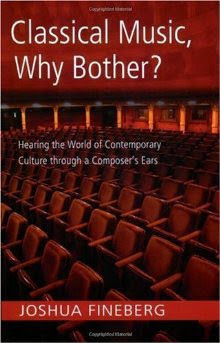Basset horn & live electronics: Electroclarinet 3

Looking for the studio album? Visit www.electroclarinet.com During my guest talk on Music & digital art , I premièred Electroclarinet 3 , a new composition for basset horn & live sound processing. The piece is an homage to Carl Maria von Weber , who composed lots of great music for clarinet. The theme, which manuscript you can see above, was inspired by the theme from Weber's Opus 33 (7 variations for clarinet & piano). At a larger scale, the form draws on Weber's composition as well: Theme Four parts corresponding to the Variation III (Adagio) of the Opus 33 Coda referencing the Opus 33's final seven measures I couldn't resist including a "WEBER" series of notes: W Mi / E E Mi bémol / Eb B Si bémol / Bb E Mi bémol / Eb R Ré / D In the coda, these notes are transposed for the basset-horn:

